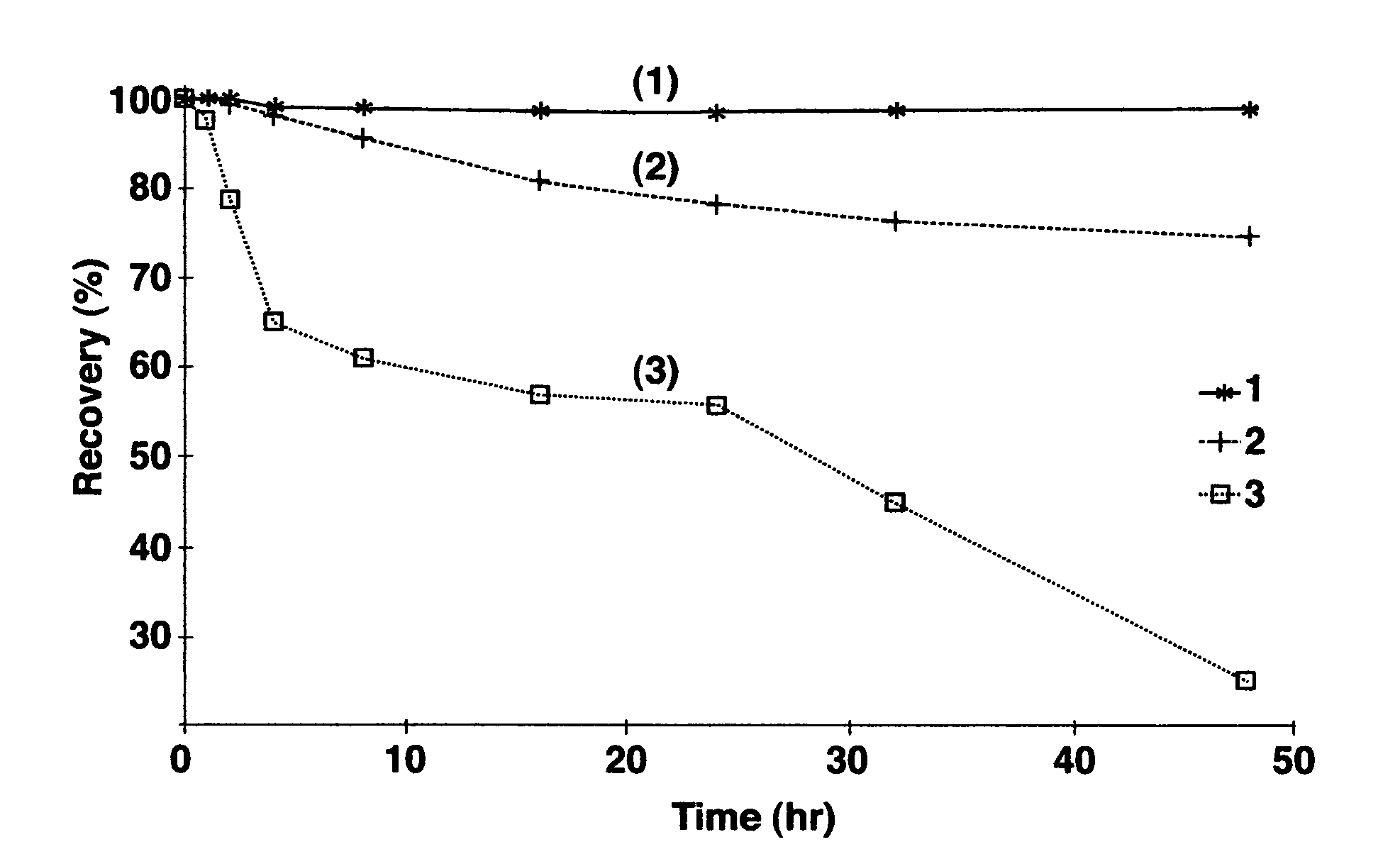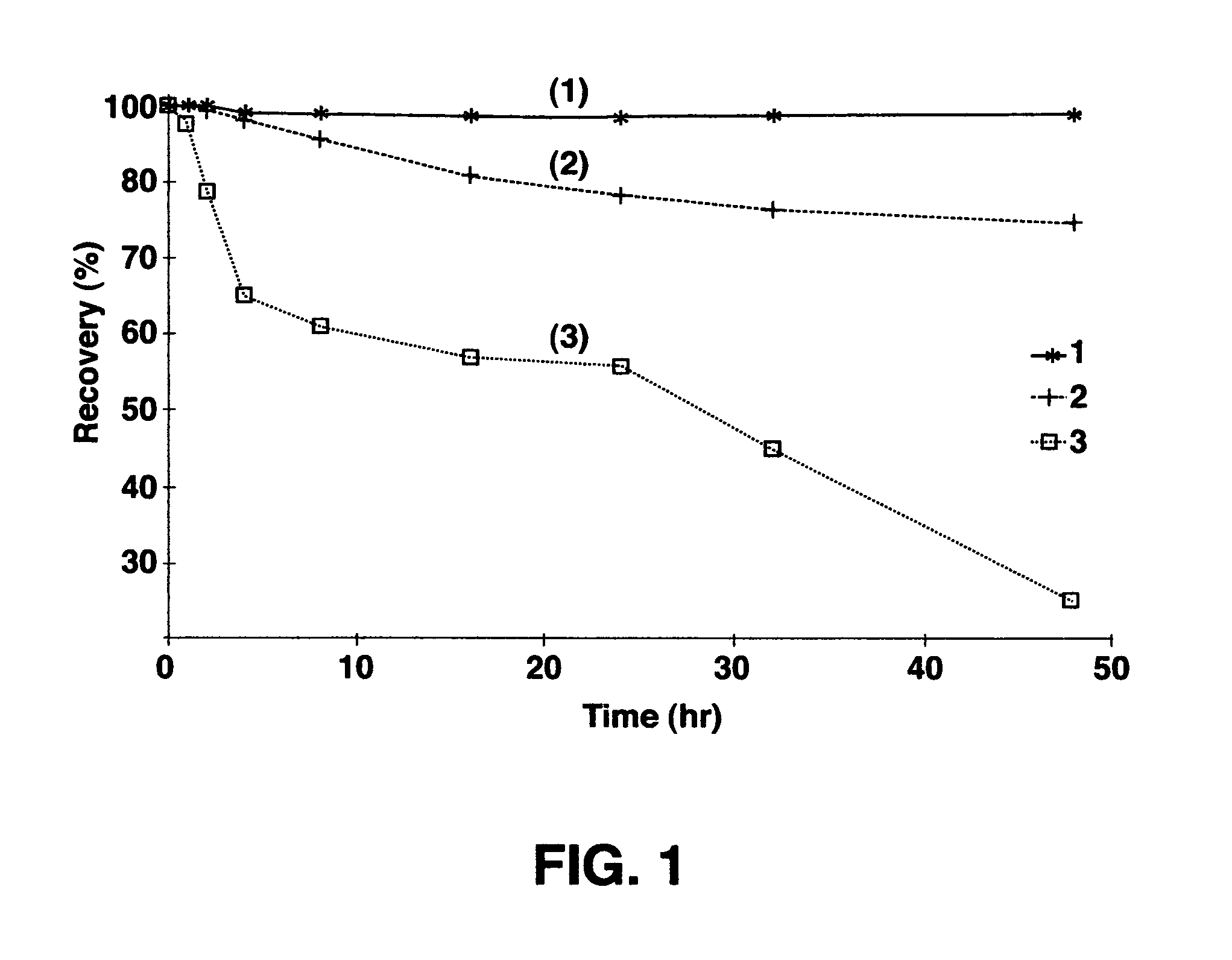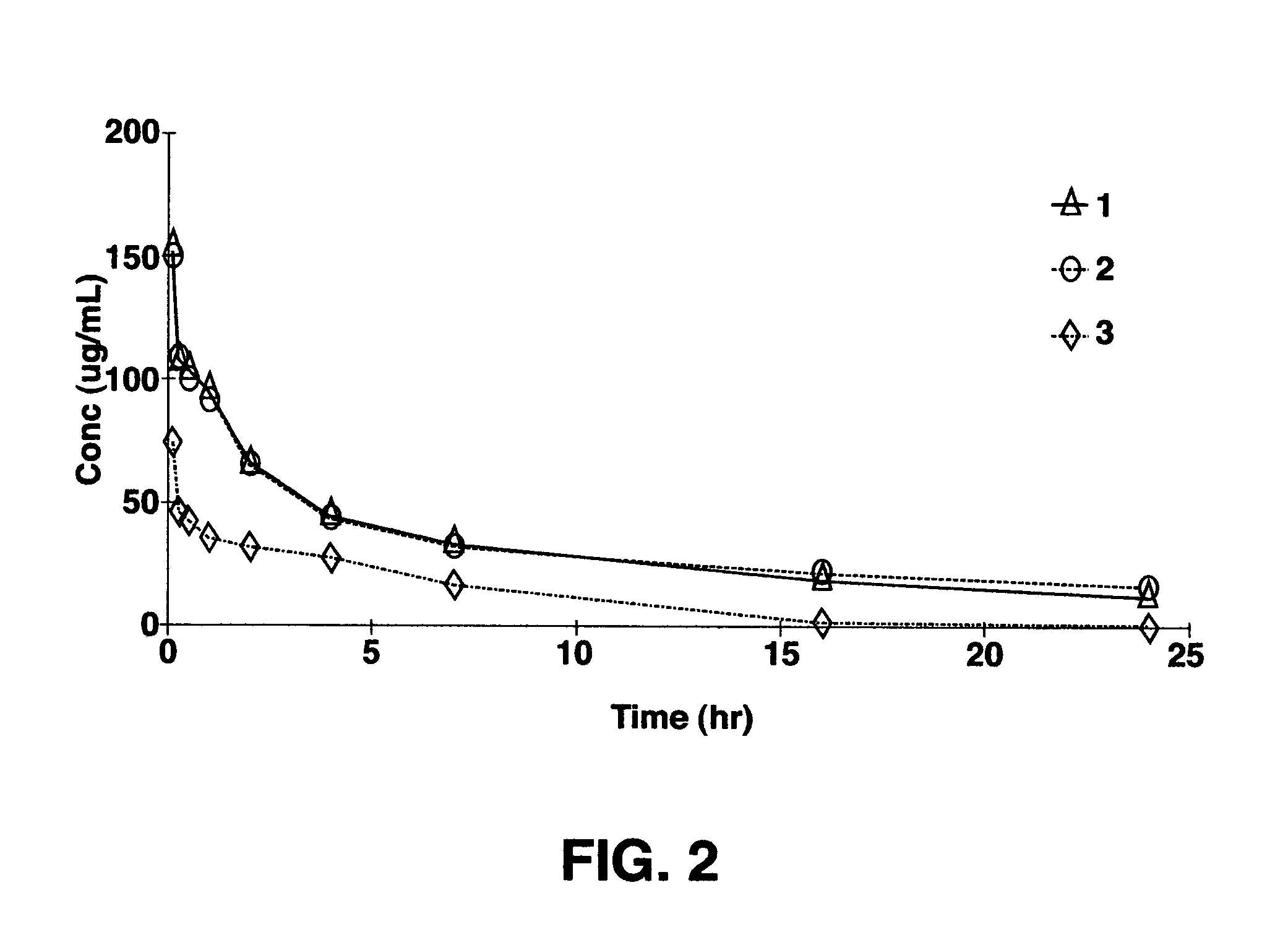PEG-lipid conjugates for liposomes and drug delivery
a technology of peg-lipid conjugates and liposomes, applied in the field of lipids and liposomes, can solve the problems of difficult to obtain suitable formulations of many drugs, and polymer is known to be non-biodegradabl
- Summary
- Abstract
- Description
- Claims
- Application Information
AI Technical Summary
Problems solved by technology
Method used
Image
Examples
example 1
Synthesis of PEG-amino (N1)-GDO
[0054]3-amino-1,2-rac-dioleoyl glycerol (˜8 moles) and potassium hydroxide (KOH, 0.5 moles) were charged into a reactor. The reaction mixture was heated to a temperature of 120-130° C. under nitrogen for two hours, with ethylene oxide (in an amount calculated to result in polymers with an average chain length of eight subunits) added while held at a temperature of 120-130° C. The reaction was completed when free ethylene oxide was not detectable. The resulting brine was continuously extracted, typically for 4 hours at 55° C. with ethyl acetate. The product was dried out of the solvents under vacuo.
example 2
Synthesis of PEG-12-Succinylamino (N2)-GDO
[0055]A mixture of 3-amino-1,2-rac-dioleoyl glycerol (0.1 mol); poly(ethylene glycol)12-monomethyl ether succinate (0.1 mol); N,N′-dicyclohexylcarbodiimide (0.1 mol); and a catalytic amount of 4-dimethylaminopyridine in anhydrous Dichloromethane (200 ml) was stirred at room temperature for 24 h, after which the N,N′-dicyclohexylurea salts were precipitated and removed by filtration. The filtrates were evaporated under reduced pressure. The crude product was purified by chromatography on a silica gel (G60, grade 60, mesh 240-400) column. The column was eluted with a 1:1 (v / v) diethyl ether / acetone mixture. The first fraction eluted was unreacted reagents and discarded. The peg-lipid peak at 220 nm (UV monitoring) was collected. Free PEGs were washing out the column by 100% acetone. The product was dried out of the solvents under vacuo.
example 3
Synthesis of PEG-12-Acetamido (N3)-GDO
[0056]3-amino-1,2-rac-dioleoyl glycerol was dissolved in ethanol / 50 mM sodium phosphate (1 / 1, v / v). The final concentration was 0.1 molar. Poly(ethylene glycol)12-aldehyde (0.5 mol) were added to the solution, the pH was adjusted to 8.0, stirred at room temperature for 20 h. The product was purified on a C8 column, using acetonitrile / 10 mM ammonium acetate, pH 6.6, then a linear gradient of methanol from 60 to 100% in 15 min, followed by a 10 min isocratic step with 100% methanol as the elution system. Peaks were detected for collection at 220 nm. The collected fraction was then freeze-dried.
PUM
| Property | Measurement | Unit |
|---|---|---|
| temperature | aaaaa | aaaaa |
| pH | aaaaa | aaaaa |
| pH | aaaaa | aaaaa |
Abstract
Description
Claims
Application Information
 Login to View More
Login to View More - R&D
- Intellectual Property
- Life Sciences
- Materials
- Tech Scout
- Unparalleled Data Quality
- Higher Quality Content
- 60% Fewer Hallucinations
Browse by: Latest US Patents, China's latest patents, Technical Efficacy Thesaurus, Application Domain, Technology Topic, Popular Technical Reports.
© 2025 PatSnap. All rights reserved.Legal|Privacy policy|Modern Slavery Act Transparency Statement|Sitemap|About US| Contact US: help@patsnap.com



